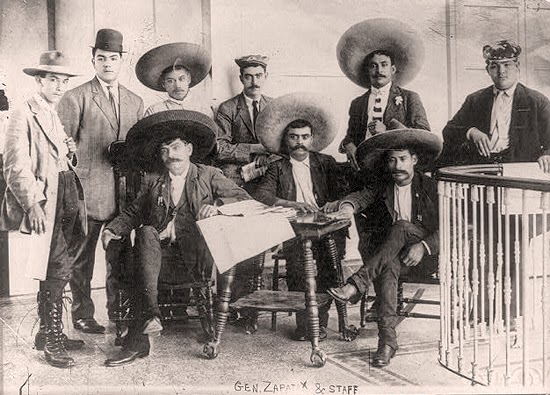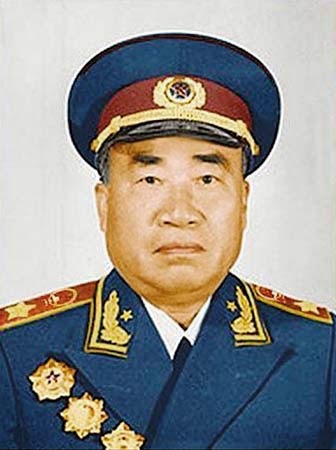 |
| Yalta Conference (1945) |
The Yalta Conference, also called the Crimea Conference or the Argonaut Conference, was a meeting of the leaders of the Grand Alliance in World War II. The meeting took place from February 4 until February 11, 1945, in Yalta in the
Soviet Union.
The Grand Alliance included the countries of the United States, the United Kingdom, and the Soviet Union. The delegations consisted of over 700 people in total and were headed by
President Franklin D. Roosevelt, Prime Minister Winston Churchill, and the first secretary of the Soviet Communist Party, Joseph Stalin.
The Yalta Conference is considered to be one of the three most important wartime meetings of the Grand Alliance (the other two being the Teheran Conference, which took place from November 28 until December 1, 1943, and the Potsdam Conference, which took place from July 17 until August 2, 1945).
The main purpose of the Yalta Conference was to discuss further strategies for military operations against the Axis powers, the establishment of occupation zones in defeated Germany and Austria, the postwar border settlement of Poland, the creation of
the United Nations, and the Soviet Union's military entry in the war in the Far East. The agreements reached at the conference were included in the Protocol of Proceedings of the Crimea Conference.
A major goal of the U.S. delegation at the Yalta Conference was to ensure the Soviet Union's participation in the establishment of the United Nations (UN). Stalin declared the Soviet commitment to take part in the founding conference of the UN in San Francisco in April 1945.
He received guarantees that the Security Council of the UN would include five permanent members equipped with veto powers. Also, he received guarantees that
Ukraine and Belarus, which at that time were Soviet republics, would be included as separate members of the General Assembly, giving the Soviet Union three votes instead of one.
Roosevelt proposed that the Protocol of Proceedings of the Yalta Conference should include the Declaration of Liberated Europe, which asserted the principles of democratic governance and self-determination of European nations freed from the Nazi occupation.
In the declaration the participants obliged themselves to facilitate the postwar process of European liberation through supporting conditions of internal peace, providing relief measures, and assisting in the organization of free, democratic, and secret national elections.
The participants at the Yalta Conference reconfirmed their demands for the unconditional surrender of the Axis powers. They also agreed that subsequent to their surrender Germany and Austria would be subject to strict demilitarization and de-Nazification policies. The issue of war criminals was to be subject to further inquiry by the foreign ministers of the United States, the United Kingdom, and the Soviet Union. The members of the Grand Alliance agreed also on the division of Germany.
This meant that the German territory would be divided into four zones of military occupation controlled by the United States, the United Kingdom, the Soviet Union, and France. The postwar occupation would be governed by the Allied Control Council, consisting of the three states of the Grand Alliance and France.
Stalin was initially opposed to Churchill's demands for the inclusion of France into the Allied Control Council and consented only under the condition that the French zone would not be carved out of the Soviet one. The Soviet Union also became entitled to half of all the postwar reparation payments, which were approximated at US $20 billion.
In order to work out specific reparation policies, a commission was established in Moscow, which included representatives of the United States, the United Kingdom, and the Soviet Union. At the Yalta Conference it was also confirmed that after the war all individuals accused of desertion or treason would be made to return to their countries of national origin.
The issue of the Polish borders and the Polish government received a great deal of attention at the Yalta Conference. By then, the United States and the United Kingdom had officially recognized the Polish governmentin-exile, which had moved to London after the German invasion of Poland in 1939.
The Soviet leaders recognized the provisional Polish government established by the Polish Committee of National Liberation, which was created in 1944 in the city of Lublin in the territory controlled by the Soviet Army. The provisional Polish government mostly included members of the former Polish socialist political organizations.
Another controversy during the Yalta Conference was the issue of the revision of the Polish borders. Stalin insisted that in this respect the Western allies should recognize the SovietGerman Boundary Treaty from 1939 (also known as the Ribbentrop-Molotov Pact).
The treaty had pushed the border approximately 200 kilometers to the west, thus giving the Soviet Union the western territories of Ukraine and Belarus. Roosevelt and Churchill agreed to recognize the legitimacy of the Polish Committee of National Liberation, even though they also insisted that after the war the Polish government should be reorganized on a more democratic basis.
Stalin promised to facilitate democratic elections in Poland and to include in the government members of the London government-in-exile. Also, Roosevelt and Churchill consented to the proposed revision of the Polish eastern border.
The participants of the Yalta Conference decided to compensate Poland's territorial loss at the expense of Germany. Thus, the prewar Polish-German border was pushed west to lines formed by the Rivers Oder and Neisse.
The result of the revisionist border policies was the creation of a much more ethnically and religiously homogenous Poland than before the war, as the areas inhabited by the Ukrainian or Belarusian Orthodox minorities were assigned to the Soviet Union and as over 7 million German residents were forcefully expelled westward.
An important goal of the U.S. delegation was to obtain Soviet agreement to join the war with Japan in the Far East. Stalin made a commitment that the Soviet Union would enter the war two or three months after the German surrender had been obtained.
In return for its involvement, the Soviet Union demanded
- the recognition of the independence of the Mongolian's Peoples Republic from China, while China would regain sovereignty over the territory of Manchuria;
- the return to the Soviet Union of the territories of southern Sakhalin and the neighboring islands that Russia had lost to Japan in the 1904–05 war; and
- the surrender of the Kurile Islands to the Soviet Union.
In return, Stalin made a commitment to start negotiations with the National government of China of Chiang Kai-shek in order to facilitate the Chinese war of resistance against Japan. The Western allies expected Stalin to expedite the peace agreement between Chiang Kai-Shek and Mao Zedong. Controversially, all these agreements were kept secret from China.
The importance of the Yalta Conference was that it sealed the future of postwar Europe as divided between two spheres of influence. Among the most controversial decisions made in Yalta was the acceptance by the United States and the United Kingdom of Soviet dominance over the countries of Eastern Europe, which legitimized the expansion of the Communist ideology.
It paved the path for the establishment of Soviet-style authoritarian regimes in East Germany, Poland, Czechoslovakia, Hungary, Romania, and Bulgaria. It also meant that the Baltic states of Estonia, Latvia, and Lithuania, which had lost their state sovereignty in 1940, became republics of the Soviet Union.
Although the conference in Yalta was characterized by an atmosphere of agreement and cooperation among the three allies, it also marked the initial stages of the cold war. With the demise of the Axis powers, conflicts arose among the former allies due to their divergent political interests, irreconcilable ideological differences, and the escalating economic and military competition between the United States and the Soviet Union.
































